京都は何気に餃子も有名な場所で、府民の年間餃子消費量は毎年ランキング上位に食い込み、ミシュランのビブグルマンを獲得したお店も市内に複数存在します。
そんな餃子処・京都において、最近注目度を高めている餃子の店があります。それが今回僕が訪店した夷川餃子なかじま。令和6年3月現在、丸太町の本店を含めて系列店が全部で4店舗。飲食店と併設してホテルや銭湯、サウナも運営しているという、おそらく全国的に見てもちょっと変わった営業スタイルの餃子店です。
さて、その夷川餃子なかじま、話題性ばかりのイロモノなのか?それとも、餃子の店としても魅力的なお店なのか?前々から気になっていて、とある日の仕事上がりに本店のある西洞院夷川まで行って来ました。僕がお店に到着したのは午後6時頃と早めの時間帯だったのですが、噂通りお店はかなり賑わっていましたね…
大阪のあの人気店に雰囲気似てる?夷川餃子なかじま 本店はこんなお店
夷川餃子なかじま 本店は、オープンが2019年2月8日と比較的新しいお店。でも一旦店内に入るとどこか色褪せたレトロな雰囲気があって、多分昭和の世代にはノスタルジー的なものがを感じられると思います。そうそう、僕ふと思ったのですが、こういうお店ってなんとなく「安価」ってイメージが一緒について来ませんか?もちろんお店の戦略なのでしょうが、その雰囲気に違わぬ価格帯のお店なので若者も気兼ねなく利用できます。
お店のスペースは入り口から奥に細く伸びていて、客席数はお一人様用のカウンター席も含めて全部で24席ありました。お店の場所柄か、僕が訪店した時は観光客風情の人はゼロで、みんな地元の人か仕事帰りで立ち寄った人って感じでした。
奥にあるカウンター席に座ってメニューを眺めていると、餃子の他にもおつまみ系を中心にフードメニューもそれなりに揃ってます。その意味ではここは「餃子専門店」ではなく、「餃子をメインにした居酒屋」です。でも、そのメニューの中に「バイス」「チャーシューエッグ」といった、どこかで見覚えのあるメニュー名が…これを見て、僕は大阪にある人気居酒屋・大衆食堂スタンドそのだを思い出しました。「ひょっとして系列店なの?」と思いましたね(どうやら違うようです)。ちょうど良いレトロ感と言い、スタンドそのだや系列店の台風飯店に似ているところがあるので、大阪から来た人にとっては別の意味で親しみやすさを感じるかもしれません。
夷川餃子なかじま 本店で看板メニューの餃子5種類を食べ比べ…京都の有名店のぎょうざとどう違う?
今回僕は夷川餃子なかじま 本店の餃子メニュー5種類を食べ比べすることにしました。その5種類の餃子メニューはこんな感じ…
- ぎょうざディープ(にんにく有) 5個380円
- ぎょうざフレンチ(にんにく無) 5個380円
- ぎょうざスーパーディープ(にんにく1.5倍) 5個430円(限定20食)
- 茹でぎょうざ(パクチーのせ) 5個490円
- 揚げぎょうざ 5個490円
京都の飲食店で茹で餃子や揚げ餃子をあまり見ないので、それだけで餃子好きにとっては訪店する理由ができているように思えます。それにしても、ニンニク抜きの餃子が「フレンチ」ですか…にんにくを抜いた以外に何か工夫があるんでしょうかね?
焼き餃子3種類(ディープ、フレンチ、スーパーディープ)
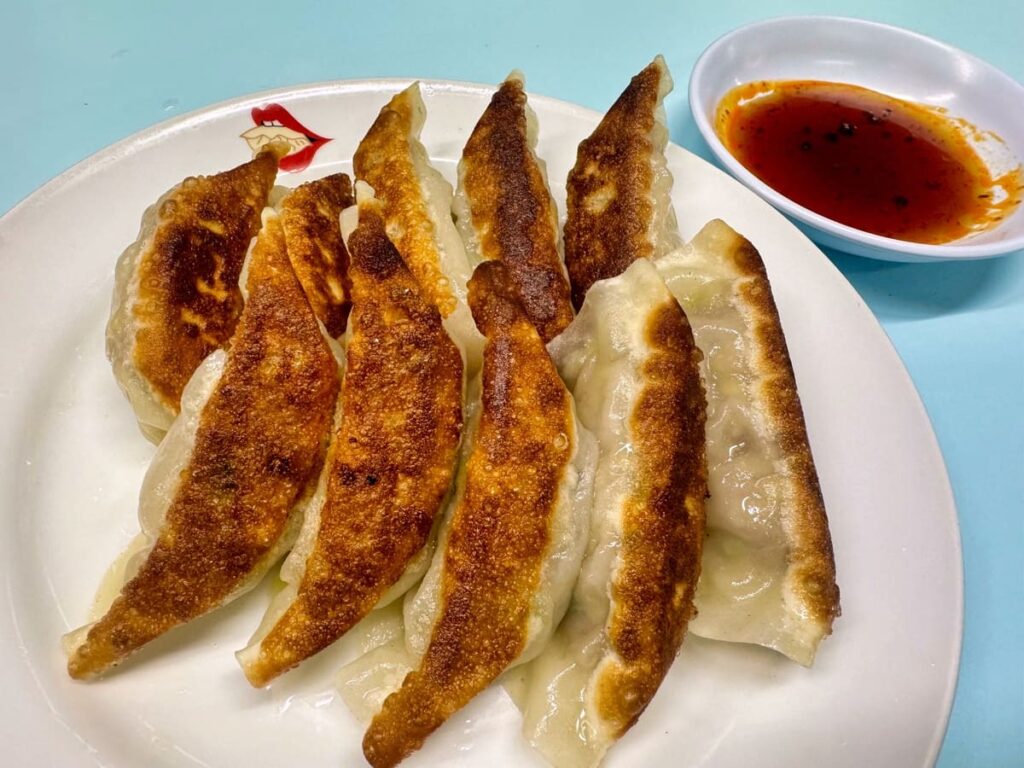
まずはぎょうざディープとフレンチから。上の画像で上の列がにんにく入りのぎょうざディープ、下の列がにんにく無しのぎょうざフレンチです。餃子1つの大きさはぎょうざ処亮昌の餃子と同じくらいかなぁ…京都では割と大きめの方じゃないかと思います。
皮を破ってみると、中の餡は結構豚肉の比率が高いです。この餡は京都の銘柄豚「京都ぽーく」と京都産のキャベツを中心に作られているんだとか。地産地消、いいですねぇ…
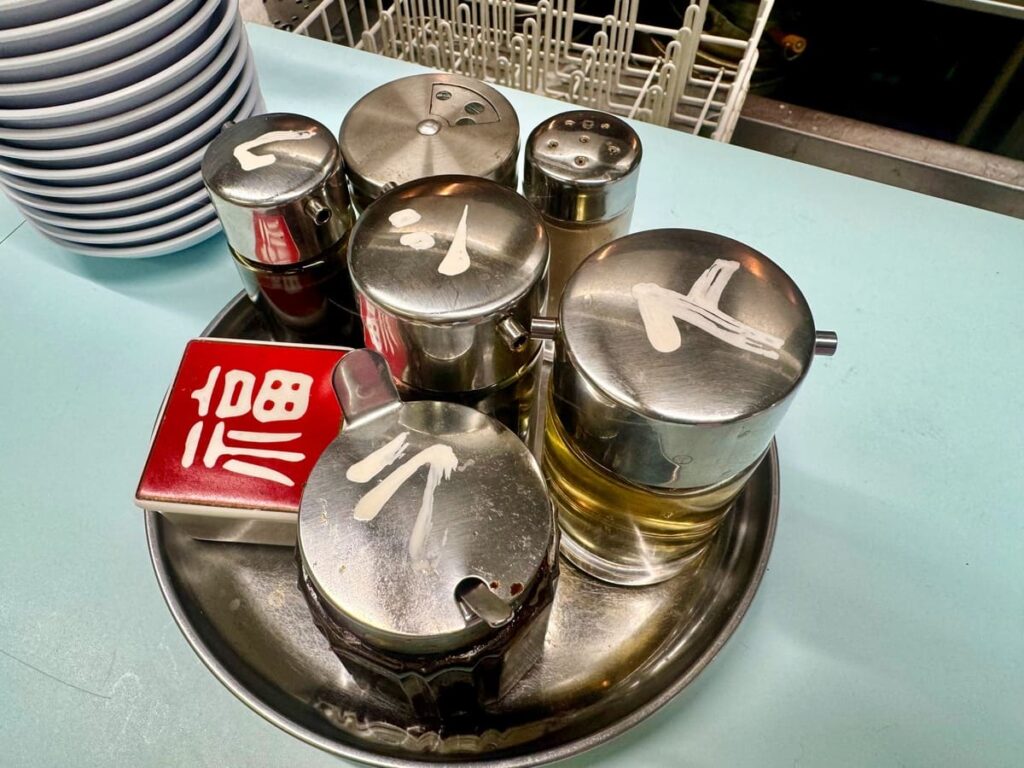
これに対する味付け調味料は、こんな感じで醤油、酢、黒酢、胡椒、自家製ラー油、辛子の6種類が卓上にスタンバイしています。お店のおすすめは「酢:醤油:黒酢=1:1:1」なんだそうな。もちろん自分好みで好きなようにアレンジしてOKです。
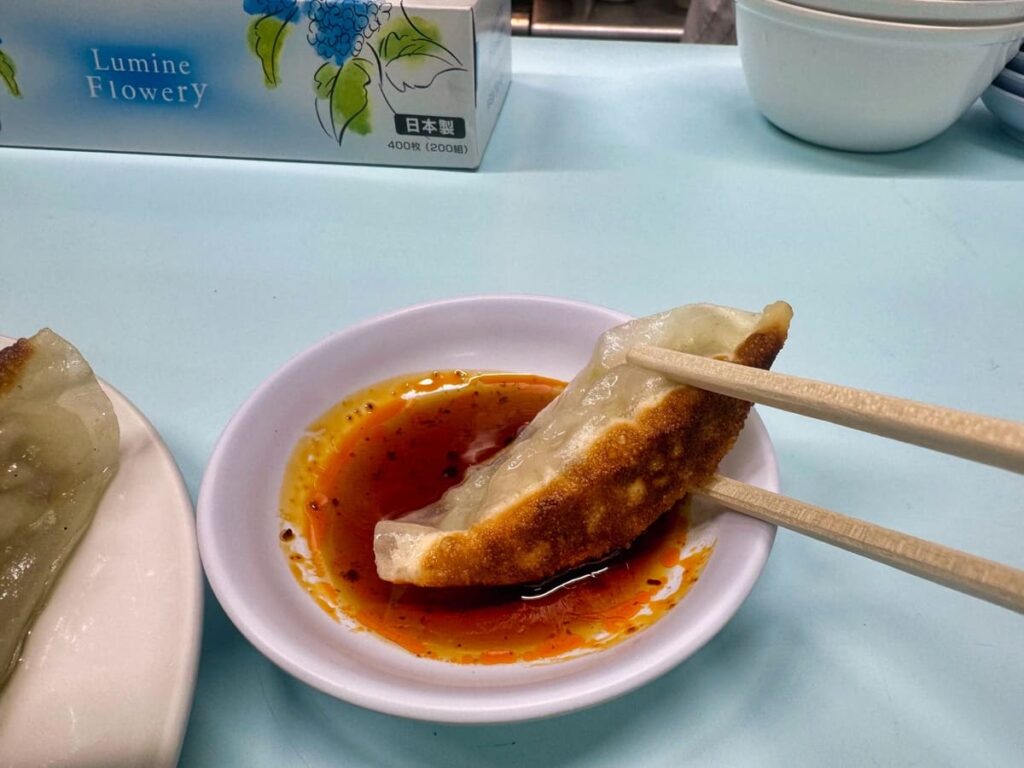
では、早速いただいてみましょうかね…皮は「薄皮」と謳っていながらそんなに薄さは感じません。普通の厚さがあって、隣の餃子とくっついて破れたりしていないのが好印象。噛むとかなり歯応えがあるというか、餡がギュッと詰まったような食感があります。特にキャベツが大きめにカットされているので、ザクザクとした歯応えが楽しめます。この点は餃子歩兵や泉門天の餃子ようなきめの細かい餡とは対照的ですね。
で、ぎょうざディープとぎょうざフレンチを食べ比べてみると、違いは本当にニンニクの有無だけでした。「フレンチ」と名付けされていながら、モトイギョーザのようなアレンジは加わっていないので、その点はご注意を。でも、ぎょうざディープの方のにんにくはかなり強烈です。実際この後ににんにく量1.5倍のぎょうざスーパーディープを食べましたが…
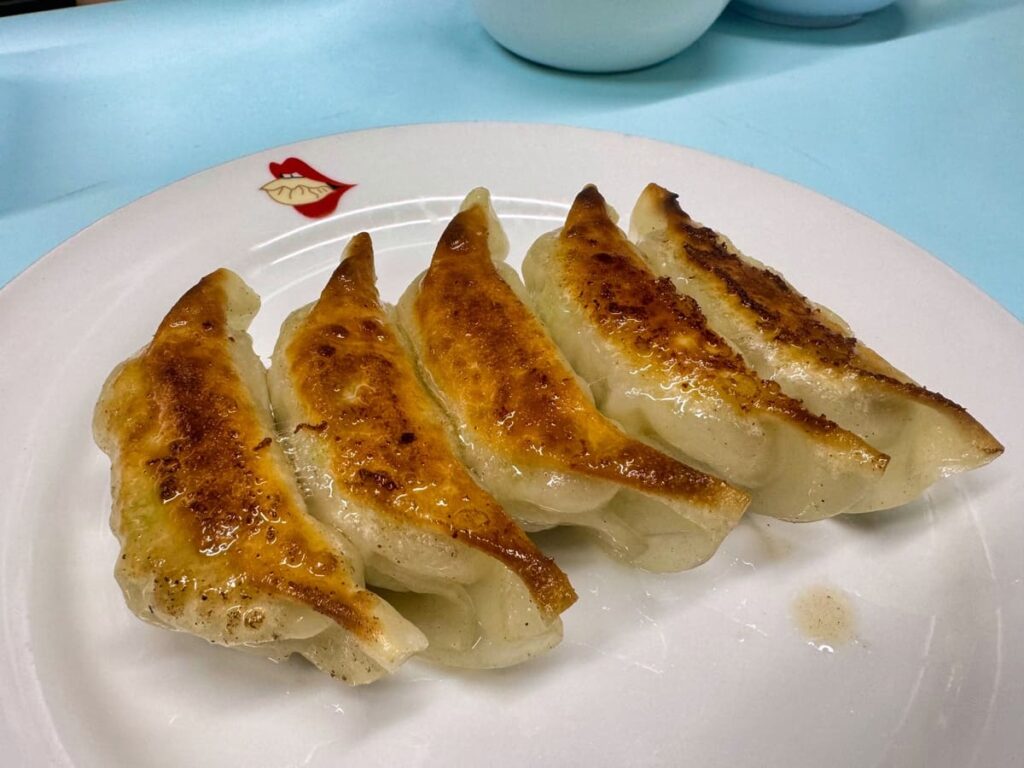
正直、「にんにく量はディープでも十分かな…」と思いましたし。このぎょうざディープのニンニク風味がすごくいい塩梅で、鼻がいい意味でやられてしまって箸が止まらなくなってしまいます。特にバイスとの組み合わせ、最高です。にんにくも大丈夫な状況なら、ぜひぎょうざディープとバイスの組み合わせを試してみてください…
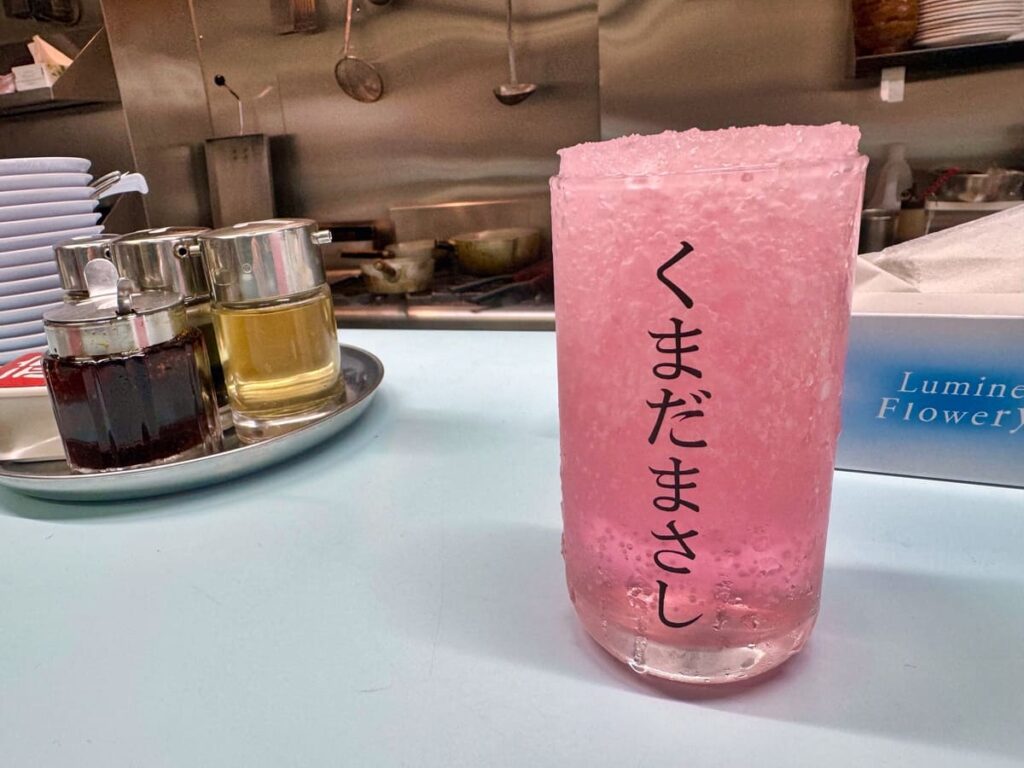
茹でぎょうざと揚げぎょうざ
続いて、京都ではなかなかお目にかかれない茹でぎょうざと揚げぎょうざをご紹介しましょう…

まずは茹でぎょうざから。メインの餃子はぎょうざフレンチを使われているようですね。食べてもにんにくの香りは全然ありません。皮がプルッとして気持ちよく、カオマンガイの付け合わせスープのような味のスープと一緒にあっさり食べられます。
この茹で餃子にはチョジャンダレというピリ辛のタレがついてくるのですが、個人的にはタレをつけずにそのまま食べる方が良いように感じました。なお、パクチーがデフォルトで入っていますが、注文時に頼めば除いてくれるので、パクチー苦手な人もご安心を…

そして最後は揚げ餃子。表面がちょっと粉っぽくなって揚げ物感がありますが、しっかり油切りされているので油っこさはありません。辛子マヨネーズで食べるのが基本っぽいのですが、このマヨネーズ、思ったより辛くなかったですね。餃子もにんにく抜きなので、ちょっとインパクトに欠けるかなぁ…ビールのおつまみとして悪くはないのですが、ぎょうざディープがお酒のつまみとしてめちゃくちゃ合っているので、個人的にはこの揚げ餃子は出番ないかな…って感じです。
こんな感じで、夷川餃子なかじま 本店の餃子メニュー全5品を食べ比べしてお会計。ニンニク不使用だったり、芸妓さんが食べられるような小さな餃子が好まれる特殊な地域・京都において、対極的に大衆的な餃子店としての存在感が強いお店でした。どちらかというと遠くからでもお客さんが集まるお店というより、地域密着型のお店のように思います。でも、餃子のクオリティは間違いないので、お店の近くに行くチャンスがあればぜひ一度試してみてください。
ちなみに、夷川餃子なかじまの餃子はお持ち帰りにも対応しています…
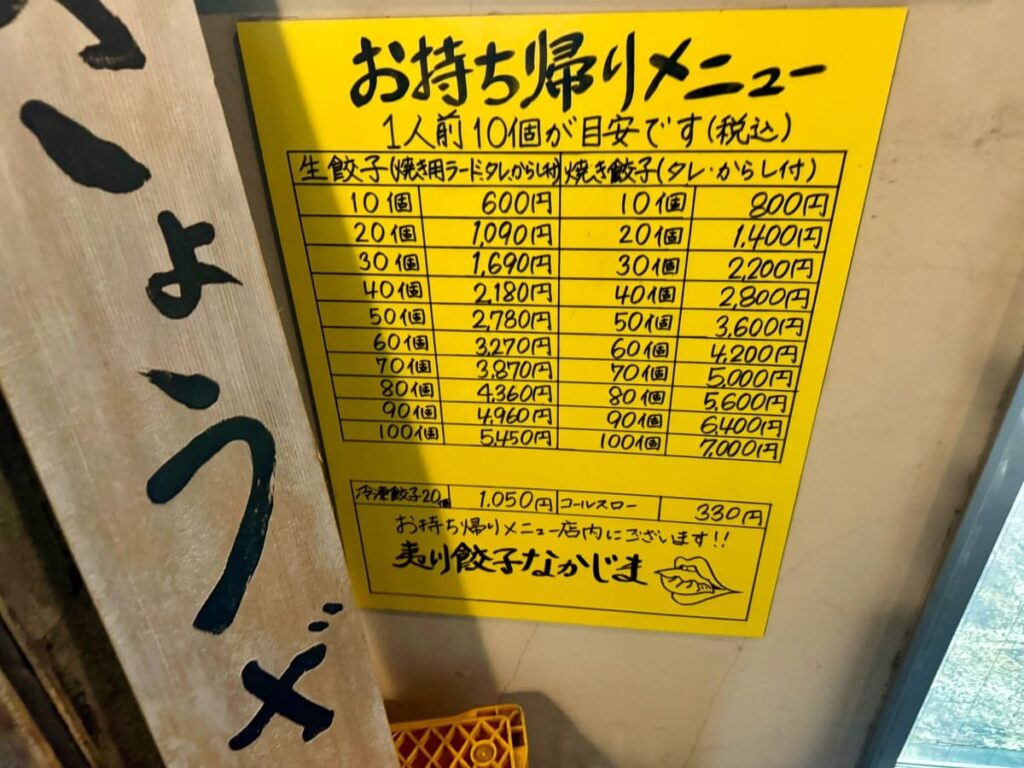
ランチメニューのなかじまスペシャル餃子定食がかなりの破壊力…夷川餃子なかじま 本店へのアクセスは、最寄り駅の京都市営地下鉄烏丸線・丸太町駅から徒歩7分
そんな夷川餃子なかじま 本店では、ランチタイムに3種類の定食を提供しているのですが…
- 日替わり定食 880円
- なかじまスペシャル餃子定食 990円
- チャーハン定食(黒 or 白) 990円
このうち「なかじまスペシャル餃子定食」がかなりの破壊力を秘めています。餃子が8個(ニンニク抜きへ変更可)にご飯と味噌汁、加えて肉味噌炒めやポテサラ、もやしナムルなどの小鉢が5種類がセット、さらにご飯の大盛りやおかわりも無料でお値段 税込1000円を切ってきました。この内容でこのお値段なら、普通にガッツリランチのお店とも勝負できるんじゃないでしょうか?二条城近くでガッツリ中華ランチをお探しなら、夷川餃子なかじま 本店を候補の1つに入れてみてください。
それでは、お店の詳細です…

京都 夷川餃子 なかじま 本店 (餃子 / 丸太町駅(京都市営)、二条城前駅、烏丸御池駅)
夜総合点★★★★☆ 4.0
住所:〒604-0062 京都府京都市中京区薬師町652−1
電話番号:075-223-0141
営業時間:11:30-14:00、17:00-22:00
定休日:無休
駐車場:なし
クレジットカード払い:不可(現金払いのみ)
京都市営地下鉄東西線・二条城前駅からだと徒歩8分で行けます。
P.S. 京都で美味しい餃子をお探しのあなた、ぜひこちらの記事にも立ち寄っていってください…

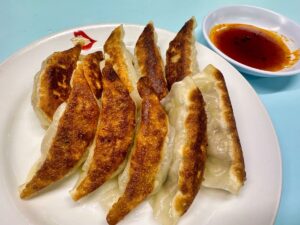
 人類みな家族 大阪本店|人気YouTuberとのコラボで誕生した家系ラーメン、どうだった?
人類みな家族 大阪本店|人気YouTuberとのコラボで誕生した家系ラーメン、どうだった?
コメントを残す